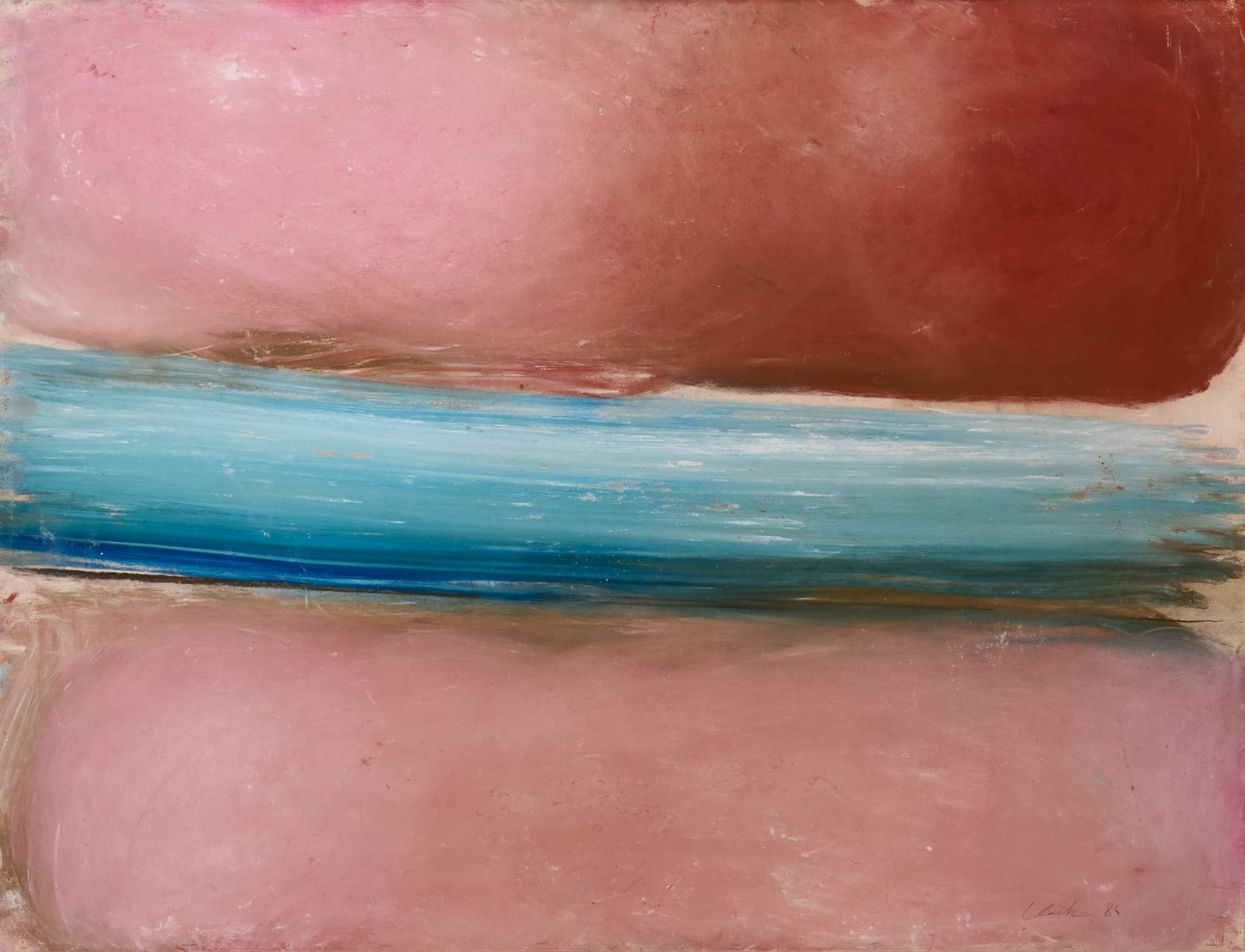Ed Clark
96.5 x 126.7 cm
Born in New Orleans in 1926, Clark served in the Air Force before enrolling at the Art Institute of Chicago in 1947. In the early 1950s, Clark became a fixture among American artists working in Paris after World War II, drawn to the artistic and personal liberation from American racial and ideological constraints. Studying at L'Académie de la Grande Chaumière, he found an artistic environment where, as he put it, there was "no diction of class, race, or political ideology. We were artists, nothing else." Clark returned to the United States in 1957 and moved to New York, where he was a founding member and exhibitor at the Brata Gallery, the influential artist cooperative.
The present work on paper, executed by Ed Clark in 1986, evidences an important period of his artistic practice and the experimental foundations that informed his celebrated large-scale canvases. Throughout his career, Clark's works on paper served as laboratories for experimentation, often with visible footprints, smudges, multiple pinholes, or other evidence of a studio patina that signal Clark's process of making, remaking, testing, and returning to compositions. The present work expands the pastel medium and relies heavily on the artist's hands as the most important instrument of paint application. In addition to pushing pigment around with his hands, Clark compared his dry pigment technique to the pouring sand tradition of the Native Americans of the Southwest, where the artist would allow powdered pigment to slip through the hand onto the support. He described this tactile engagement as "a personal breakthrough in the abstract experience," one that allowed for spontaneity and constant transformation.
Equally important was Clark's ongoing exploration of color and place. He was deeply aware of how color could evoke the sensory and emotional resonance of specific environments—whether Paris in the summer, New York in winter, or the luminous atmospheres of Morocco, Mexico, and Brazil, where he traveled. His works seem to capture not only the light of these locales but also his lived experience within them.
Clark's career was consumed by his reinvention of abstraction. His most celebrated innovation came through his use of a push broom, a tool associated with janitorial, often Black labor, to apply and move paint across his canvases. This technique, which became known as "the big sweep," imbued his work with both physicality and improvisational poetry as the broom's broad strokes and soft-edged transitions produced subtle shifts in color. While Clark's large canvases commanded critical attention, his works on paper reveal an intimate side of his process, imbued with the immediacy of his focus on form and color.
Provenance
The artist;Private collection, New York, circa 1990-95; to
The present owner

